Andreas Capellanus, also known as Andrew the Chaplain, and occasionally by a French translation of his name, André le Chapelain, was the 12th-century author of a treatise commonly known as De amore, and often known in English, somewhat misleadingly, as The Art of Courtly Love, though its realistic, somewhat cynical tone suggests that it is in some measure an antidote to courtly love. Little is known of Andreas Capellanus's life, but he is presumed to have been a courtier of Marie de Champagne, and probably of French origin.

Poetry is a form of literary art that uses aesthetic and often rhythmic qualities of language to evoke meanings in addition to, or in place of, literal or surface-level meanings. Any particular instance of poetry is called a poem and is written by a poet. Poets use a variety of techniques called poetic devices, such as assonance, alliteration, euphony and cacophony, onomatopoeia, rhythm, and sound symbolism, to produce musical or incantatory effects. Most poems are formatted in verse: a series or stack of lines on a page, which follow a rhythmic or other deliberate pattern. For this reason, verse has also become a synonym for poetry.

Dafydd ap Gwilym is regarded as one of the leading Welsh poets and amongst the great poets of Europe in the Middle Ages. Dafydd’s poetry also offers a unique window into the transcultural movement of cultural practices and preservation of culture in the face of occupation. Dafydd also helps answer questions that linger over the spread of culture. Even though it has been given less attention, cultural development in Wales differed slightly than in other parts of Europe during the same time.
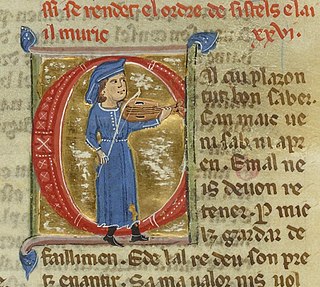
A troubadour was a composer and performer of Old Occitan lyric poetry during the High Middle Ages (1100–1350). Since the word troubadour is etymologically masculine, a female equivalent is usually called a trobairitz.
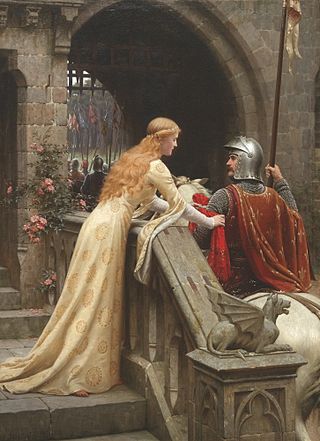
Courtly love was a medieval European literary conception of love that emphasized nobility and chivalry. Medieval literature is filled with examples of knights setting out on adventures and performing various deeds or services for ladies because of their "courtly love". This kind of love was originally a literary fiction created for the entertainment of the nobility, but as time passed, these ideas about love spread to popular culture and attracted a larger literate audience. In the high Middle Ages, a "game of love" developed around these ideas as a set of social practices. "Loving nobly" was considered to be an enriching and improving practice.

Modern lyric poetry is a formal type of poetry which expresses personal emotions or feelings, typically spoken in the first person. The term for both modern lyric poetry and modern song lyrics derives from a form of Ancient Greek literature, the Greek lyric, which was defined by its musical accompaniment, usually on a stringed instrument known as a kithara, a seven-stringed lyre . It is not equivalent to song lyrics, though song lyrics are often in the lyric mode, and it is also not equivalent to Ancient Greek lyric poetry, which was principally limited to song lyrics, or chanted verse.
Envoi or envoy in poetry is used to describe:
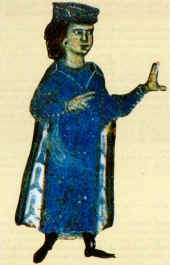
William IX, called the Troubadour, was the Duke of Aquitaine and Gascony and Count of Poitou between 1086 and his death. He was also one of the leaders of the Crusade of 1101. Though his political and military achievements have a certain historical importance, he is best known as the earliest troubadour—a vernacular lyric poet in the Occitan language—by whom some work survives.
Occitan literature is a body of texts written in Occitan, mostly in the south of France. It was the first literature in a Romance language and inspired the rise of vernacular literature throughout medieval Europe. Occitan literature's Golden Age was in the 12th century, when a rich and complex body of lyrical poetry was produced by troubadours writing in Old Occitan, which still survives to this day. Although Catalan is considered by some a variety of Occitan, this article will not deal with Catalan literature, which started diverging from its Southern French counterpart in the late 13th century.

Bertran de Born was a baron from the Limousin in France, and one of the major Occitan troubadours of the 12th-13th century. He composed love songs (cansos) but was better known for his political songs (sirventes). He was involved in revolts against Richard I and then Phillip II. He married twice and had five children. In his final years, he became a monk.
Andalusi classical music, also called Andalusi music or Arab-Andalusian music, is a genre of music originally developed in al-Andalus by the Muslim population of the region and the Moors. It then spread and influenced many different styles across the Maghreb after the Expulsion of the Moriscos. It originated in the music of al-Andalus between the 9th and 15th centuries. Some of its poems derive from famous authors such as al-Mu'tamid ibn Abbad, Ibn Khafaja, al-Shushtari, and Ibn al-Khatib.
French poetry is a category of French literature. It may include Francophone poetry composed outside France and poetry written in other languages of France.
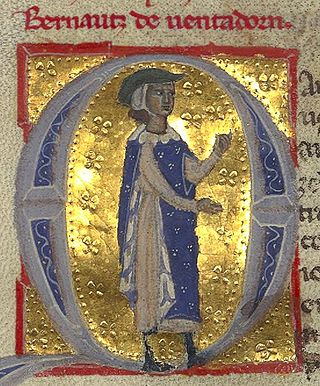
Bernart de Ventadorn was a French poet-composer troubadour of the classical age of troubadour poetry. Generally regarded as the most important troubadour in both poetry and music, his 18 extant melodies of 45 known poems in total is the most to survive from any 12th-century troubadour. He is remembered for his mastery as well as popularization of the trobar leu style, and for his prolific cançons, which helped define the genre and establish the "classical" form of courtly love poetry, to be imitated and reproduced throughout the remaining century and a half of troubadour activity.
France has a rich music history that was already prominent in Europe as far back as the 10th century. French music originated as a unified style in medieval times, focusing around the Notre-Dame school of composers. This group developed the motet, a specific musical composition. Notable in the high Middle Ages were the troubadours and trouvères soon began touring France, composing and performing many original songs. The styles of ars nova and ars subtilior sprung up in the 14th century, both of which focused on secular songs. As Europe moved into the Renaissance age, the music of France evolved in sophistication. The popularity of French music in the rest of Europe declined slightly, yet the popular chanson and the old motet were further developed during this time. The epicenter of French music moved from Paris to Burgundy, as it followed the Burgundian School of composers. During the Baroque period, music was simplified and restricted due to Calvinist influence. The air de cour then became the primary style of French music, as it was secular and preferred by the royal court.
The pastourelle (French:[pastuʁɛl]; also pastorelle, pastorella, or pastorita is a typically Old French lyric form concerning the romance of a shepherdess. In most of the early pastourelles, the poet knight meets a shepherdess who bests him in a battle of wit and who displays general coyness. The narrator usually has sexual relations, either consensual or rape, with the shepherdess, and there is a departure or escape. Later developments moved toward pastoral poetry by having a shepherd and sometimes a love quarrel. The form originated with the troubadour poets of the 12th century and particularly with the poet Marcabru.
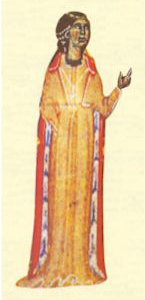
The trobairitz were Occitan female troubadours of the 12th and 13th centuries, active from around 1170 to approximately 1260. Trobairitz is both singular and plural.

Rigaut de Berbezilh was a troubadour of the petty nobility of Saintonge. He was a great influence on the Sicilian School and is quoted in the Roman de la Rose. About fifteen of his poems survive, including one planh and nine or ten cansos. His name is sometimes given as Richart or Richartz.

Raimon de Miraval(h) (c. 1135/1160 – c. 1220) was a troubadour (fl. 1180–1220) and, according to his vida, "a poor knight from Carcassonne who owned less than a quarter of the castle of Miraval." Favoured by Raymond VI of Toulouse, he was also later associated with Peter II of Aragon and Alfonso VIII of Castile. His senhal for Raymond VI was Audiart.
Andreas Capellanus was the twelfth century author of a treatise commonly titled De amore, also known as De arte honeste amandi, for which a possible English translation is The Skill of Loving Virtuously. His real identity has never been determined, but has been a matter of extended academic debate. Andreas Capellanus is sometimes known by a French translation of his name, André le Chapelain.
Nationality words link to articles with information on the nation's poetry or literature.









